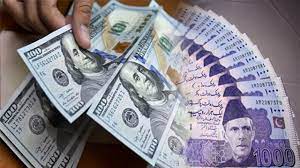Dollar to PKR
Exchange rates play a crucial role in the global economy, impacting everything from the cost of goods to international investments. One of the most closely watched exchange rates is the dollar to PKR (Pakistani Rupee). This article delves into the intricacies of this exchange rate, offering insights into its history, influencing factors, and its impact on daily life.
Introduction
Importance of Exchange Rates
Exchange rates are vital for international trade and finance. They determine how much one currency is worth in terms of another, influencing trade balances, inflation, and overall economic health. For Pakistan, the exchange rate between the US dollar and the Pakistani rupee is particularly significant.
Overview of Dollar to PKR
The dollar-to-PKR exchange rate reflects the value of one US dollar in Pakistani rupees. This rate fluctuates based on various economic, political, and market factors, affecting businesses, consumers, and investors alike.
Historical Context
Early History of PKR
The Pakistani rupee was introduced in 1947, replacing the Indian rupee following the partition of India and Pakistan. Initially pegged to the British pound, the rupee has undergone several changes in its exchange rate regime.
Evolution of the Exchange Rate
Over the decades, the PKR has shifted from fixed exchange rates to a managed float system, and more recently, to a market-determined exchange rate. These changes reflect Pakistan’s evolving economic policies and global market dynamics.
Factors Influencing the Exchange Rate
Economic Indicators
Key economic indicators such as inflation rates, interest rates, and GDP growth significantly impact the dollar-to-PKR exchange rate. High inflation in Pakistan, for example, can devalue the rupee, making imports more expensive and affecting the exchange rate.
Political Stability
Political stability in Pakistan is another crucial factor. Government policies, international relations, and political events can either strengthen or weaken the rupee. Political uncertainty often leads to currency depreciation as investors seek safer havens.
Global Market Trends
Global economic trends, including trade balances, foreign direct investment, and speculative activities, also influence the exchange rate. A favorable trade balance can strengthen the rupee, while speculative trading can cause volatility.
Economic Indicators and Their Impact
Inflation Rates
High inflation erodes the purchasing power of a currency. In Pakistan, persistent inflationary pressures can lead to a weaker rupee, increasing the dollar to PKR exchange rate.
Interest Rates
Interest rates set by the State Bank of Pakistan affect capital flows. Higher interest rates attract foreign investment, potentially strengthening the rupee, while lower rates can have the opposite effect.
GDP Growth
Strong economic growth can boost investor confidence in Pakistan’s economy, leading to a stronger rupee. Conversely, sluggish growth can result in a weaker currency.
Political Stability and Exchange Rates
Government Policies
Fiscal and monetary policies implemented by the government and the central bank play a pivotal role. Policies aimed at controlling inflation, managing debt, and stimulating growth can impact the exchange rate.
International Relations
Pakistan’s relationships with major economies like the US and China influence foreign investment and trade, affecting the exchange rate. Positive relations can attract investment, strengthening the rupee. Also, read about the money transfer services in Pakistan.
Political Events
Elections, government changes, and political turmoil can lead to uncertainty, causing fluctuations in the exchange rate. Stability usually supports a stronger currency, while instability can lead to depreciation.
Global Market Trends
Trade Balance
A positive trade balance, where exports exceed imports, can lead to a stronger rupee. Conversely, a trade deficit can weaken the currency.
Foreign Direct Investment
FDI inflows are crucial for economic growth. High levels of FDI can strengthen the rupee, while low levels can indicate economic challenges, leading to depreciation.
Speculative Activities
Currency speculation can cause short-term volatility in exchange rates. Traders betting on future movements of the dollar to PKR rate can create rapid changes in its value.
Understanding Currency Exchange Mechanisms
Forex Markets
The foreign exchange market is where currencies are traded. It operates 24/7, with prices influenced by supply and demand dynamics.
Central Bank Interventions
Central banks, including the State Bank of Pakistan, may intervene in the forex market to stabilize the currency. These interventions can temporarily influence the exchange rate.
Exchange Rate Regimes
Countries adopt different exchange rate regimes, from fixed to floating rates. Pakistan’s shift to a market-determined rate reflects its current economic strategy.
Impact on Everyday Life
Cost of Living
Fluctuations in the exchange rate can affect the cost of living. A weaker rupee makes imports more expensive, impacting prices of goods and services.
Travel and Tourism
For travelers, the exchange rate determines how far their money will go. A strong dollar means Pakistani travelers get more value when spending abroad, while a weak rupee makes foreign travel costly.
Investment and Savings
Investors need to consider exchange rates when making decisions. A volatile dollar-to-PKR rate can affect returns on investments and savings in foreign currencies.
Predicting Future Trends
Economic Forecasts
Economic analysts use various models to predict exchange rate movements. These forecasts consider economic indicators, market trends, and political developments.
Political Projections
Political stability and policies are crucial for future exchange rate trends. Projections often incorporate potential political scenarios and their economic implications.
Expert Opinions
Financial experts and economists provide insights based on their analysis of current events and historical data. Their opinions can guide investors and businesses.
Practical Tips for Currency Exchange
Best Times to Exchange Money
Exchange rates can vary throughout the day. Monitoring trends and timing transactions can help get better rates.
Reliable Exchange Platforms
Using reputable platforms and services ensures fair rates and secure transactions. Online platforms often offer competitive rates compared to traditional banks.
Avoiding Common Pitfalls
Being aware of hidden fees and understanding market dynamics can help avoid common pitfalls in currency exchange.
Case Studies
Major Devaluations
Examining past devaluations of the rupee provides insights into causes and effects, helping to understand potential future trends.
Successful Economic Reforms
Countries that have successfully reformed their economies often see improved exchange rates. Studying these cases can offer lessons for Pakistan.
Regional Comparisons
Comparing Pakistan’s exchange rate trends with neighboring countries can provide a broader perspective on regional economic health.
Role of Technology in Exchange Rates
Online Exchange Platforms
The rise of online platforms has made currency exchange more accessible and competitive, offering better rates and convenience.
Mobile Apps for Currency Conversion
Mobile apps provide real-time exchange rates and easy conversion tools, helping travelers and investors make informed decisions.
Blockchain and Cryptocurrencies
Emerging technologies like blockchain and cryptocurrencies are influencing traditional currency markets, offering new ways to transact and invest.
Conclusion
Understanding the dollar-to-PKR exchange rate requires a multifaceted approach, considering economic indicators, political stability, and global trends. By staying informed and utilizing practical tips, individuals and businesses can navigate the complexities of currency exchange effectively.
FAQs
How often do exchange rates change?
Exchange rates fluctuate constantly due to market dynamics, economic data releases, and geopolitical events.
What is the best way to stay updated on exchange rates?
Using financial news websites, mobile apps, and online platforms can help you stay informed about current exchange rates.
How do central banks influence exchange rates?
Central banks can influence exchange rates through monetary policies, interest rate adjustments, and direct market interventions.
Can individuals influence the dollar-to-PKR exchange rate?
While individual actions have minimal impact, collective trading activities and investment decisions can influence exchange rates.
What are the risks of currency exchange?
Risks include exchange rate volatility, hidden fees, and unfavorable market conditions. It’s essential to use reliable platforms and stay informed.





